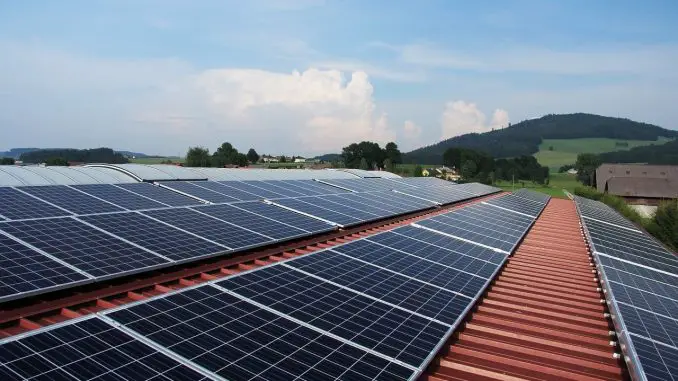
Since each individual solar cell can only generate a small amount of current, the solar cells are connected in series to solar panels. Solar panels mainly consist of glass.
By weight, about two-thirds are glass. In addition, solar modules have an aluminum frame and a small amount of plastic and silicon as the main components. The modules also have small quantities of silver, copper, and lead.
Are there different solar cell variants?
Yes, the most common are crystalline silicon solar cells, which make up about 95 percent of the world market. But there are also thin-film solar cells.
The crystalline silicon solar cells are divided into polycrystalline and monocrystalline solar cells.
Polycrystalline and monocrystalline cells
Polycrystalline solar cells (sometimes also called multi-crystalline solar cells) have long been the dominant type of solar cells in the solar cell market. In recent years, however, monocrystalline solar cells have taken on a larger and larger market share thanks to faster technology development, which has led to higher efficiency and better efficiency.
2018 was the first year that mono and poly had an equal market share. The trend is clear and monocrystalline modules are now expected to become the dominant technology.
In total, there were 500 gigawatts of solar installed in the world in 2018. China installed 45 gigawatts the same year. Since they and the rest of the world mainly install crystalline solar cells, this technology is especially under pressure.
Thin Film Cells
Thin-film solar cells are not as common as crystalline solar cells. The advantage of thin films is that they are customizable. The solar cells can be attached to both hard and flexible materials. While efficiency is lower, they are not affected as much by shading and high temperatures as crystalline solar cells.
Thin-film solar cells are more expensive per installed kilowatt, compared to crystalline solar cells. But cheaper per square meter. From a technical point of view, the thin-film solar cells differ from the crystalline in that they give higher voltage from each module. This means more connections and cables compared to a crystalline solar cell system. Some thin-film solar cells also require specific inverters, which reduces the choice.
There are various thin-film solar cells and the most common is a CIGS solar cell. CIGS stands for copper, indium, gallium, and selenium.
Leave a Reply